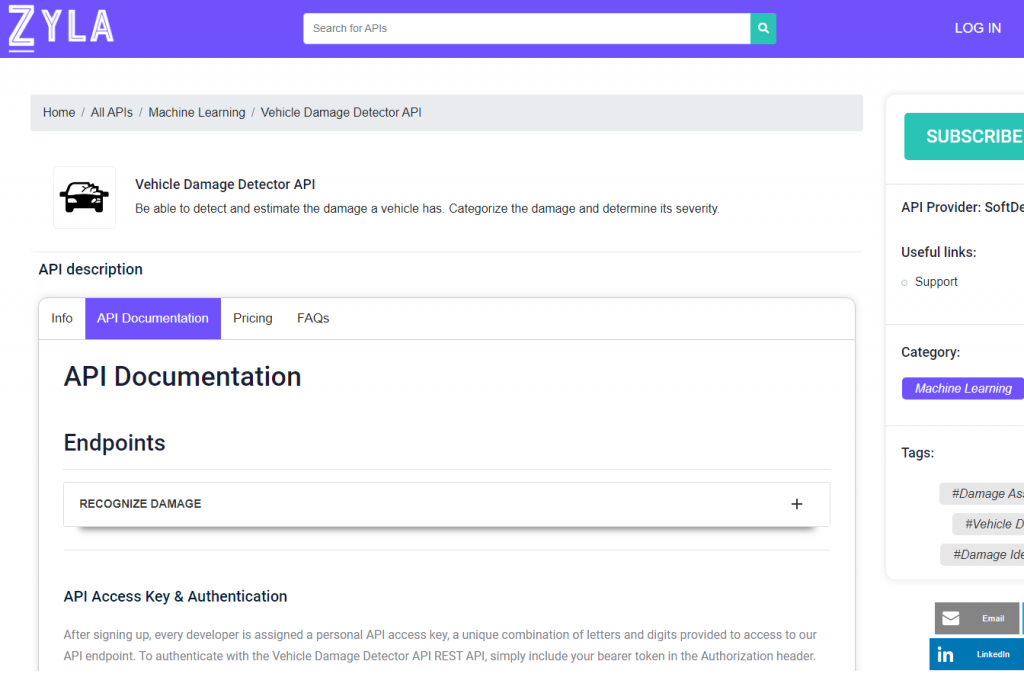Latest in Automotive Industry: Check out how this useful Vehicle Inspection API can do great breakthroughs in software development for car companies.
If you are invested in the automotive industry one way or the other, you may know how important it is to detect damage on cars. Being able to tell off any severe damage or broken parts is key when it comes to repairs or fixing of vehicles and if you are a manufacturer or marketer for cars it’s vital to not attempt to sell faulty merchandise.
However; in order to pinpoint damage for a car an expert is usually needed. But, in the modern times it’s possible to call for a different type of expert. Recent technologies are capable of providing high quality and reliable results on damage detection and vehicle inspection which can lead to great developments in automated software when working with vehicles.
What are these great technologies then? APIs or Application Programming Interface. They are digital implementations which you can add to your workflow and; in this case; help identify damage on vehicles. They work simply by transferring data to another system which provides other information in return; the API only helps speed up the process reducing the waiting time.

Where Can I Find A Vehicle Inspection API?
If you want to have the best of the best, Vehicle Damage Detector API is right for you. This Car Damage Recognition API offers you with precise and useful damage reports based on photos and pictures of the vehicle. It’s quick, efficient and easy to use.
In order for you to use the Vehicle Damage Detector API; you must first provide the site with an image format file. This file should be less than 50MB in size and have a resolution of between 2000 x 2000 and 640 x 480. These are ideal parameters for the API’s AI which will be reading the image. Another suggestion is to photograph the damaged car inside a radius of 80cm – 1.5m. If you meet all these conditions, the damage identification process begins once you send the file via the site.
The API transfers this file to the mentioned AI. This AI will do an analysis and identify any pertinent damage. It will then transfer anything it recovers to the API; which will provide it to you in the form of details via a site response. This can either be returned as a report on the identified damage or as an image marked with a bounding box if the option was marked beforehand.

How Does This Lead To An Increase In Software Development In The Automotive Industry?
There are three great feats that make Vehicle Damage Detector API outstanding amongst others alike. First it’s the ability you easily integrate it into workflows or perhaps even programs that work with cars as well. The site can work for plenty of programming languages; furthermore, its simple system allows for many uses in a short time.
Second and related to what was last said; the site offers adaptability and flexibility as two other feats. The former refers to the way the system of Vehicle Damage Detection API learns and works to provide accurate and reliable results on vehicular damage. The later feat refers to customization.
By standard use, Vehicle Damage Detector API works on a request-per-use method. With a base account the site gives you a set amount of requests each month to work with. Nonetheless you can also increase and enhance this limit via the site’s bundles and upgrade plans. You can look at all of them in the pricing page. There is no doubt that with this API you’ll be able to identify damage on cars fast and efficiently.
Go to Vehicle Damage Detector API and see how to improve on software development for the Automotive Industry now!
This related post might peak your interest: Best Vehicle Inspection APIs For Vehicle Manufacturers

